The velocity-time graph of robber's car and a chasing police car are shown in the following graph. Police car crosses the robber's car in time
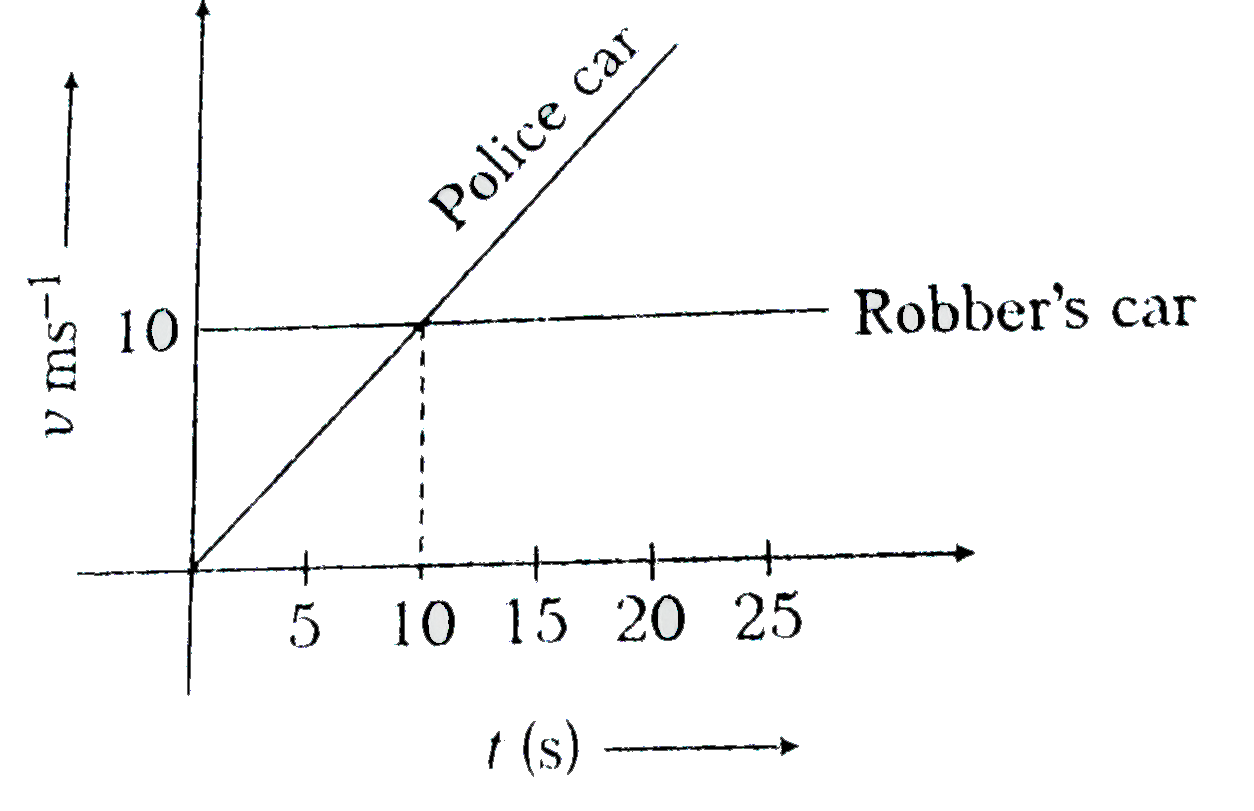
10 s after it starts
1 s after it starts
20 s after it starts
Never crosses
The correct Answer is:C
From graph, velocity of robber's car =10ms−1
Let police car crosses it after t second.
Distance travelled by robber's car = 10 t m
Police car is moving with a constant acceleration of 1ms−2 as it attains a velocity of 10ms−1 in 10 s after starting from rest. Distance travelled in t second =12.a.t2=12t2
When the police car crosses the arosses the robber's car, distance travelled by the both cars should be same from the starting point of chase.
∴12t2=10t⇒t=20s
Topper's Solved these Questions
- BOOK - DC PANDEYCHAPTER - MOTION IN A PLANEEXERCISE - (B) Meical entrance special format questions (Mathch the columns)6videos
MOTION IN A PLANE
- BOOK - DC PANDEYCHAPTER - MOTIONEXERCISE - Medical entrances gallery19videos
MOTION
- BOOK - DC PANDEYCHAPTER - PROJECTILE MOTIONEXERCISE - Level - 2 Subjective10videos
PROJECTILE MOTION
Similar Questions
The velocity-time graphsof a car and a scooter are shown in the figure. (i) The difference between the distance travelled by the car and the scooter in 15 and (ii) the time at which the car will catch up with the scooter are, respectively.
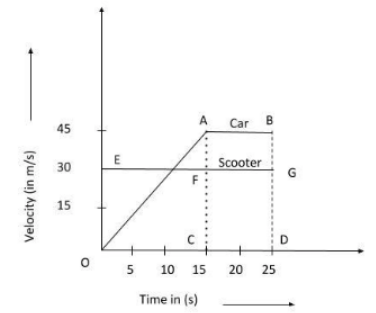 View Solution
View SolutionFigure 3.64 shows the position-time graphs of three car A, B and C. On the basis of the graphs, answer the following questions : Are the three cars ever at the same point on the road ?
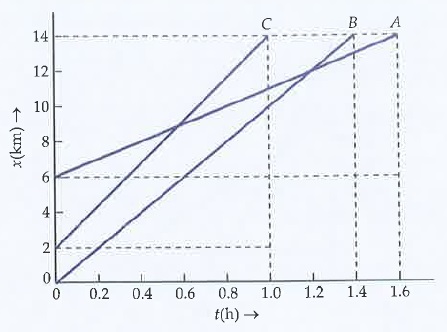 View Solution
View Solution
Knowledge Check
- Question 1 - Select One or More
The velocity time graph of the motion of a car is given here.
 AThe distance travelled by the car in the first six seconds is 150 m.BThe deceleration of the car during the last two seconds are −15ms2.CThe distance travelled by the car in the first six second is 220 m.DThe deceleration of the car during the last two second is −20ms2
AThe distance travelled by the car in the first six seconds is 150 m.BThe deceleration of the car during the last two seconds are −15ms2.CThe distance travelled by the car in the first six second is 220 m.DThe deceleration of the car during the last two second is −20ms2 - Question 2 - Select One
Velocity-time graph for a car is semicircle as shown here. Which of the following is correct:
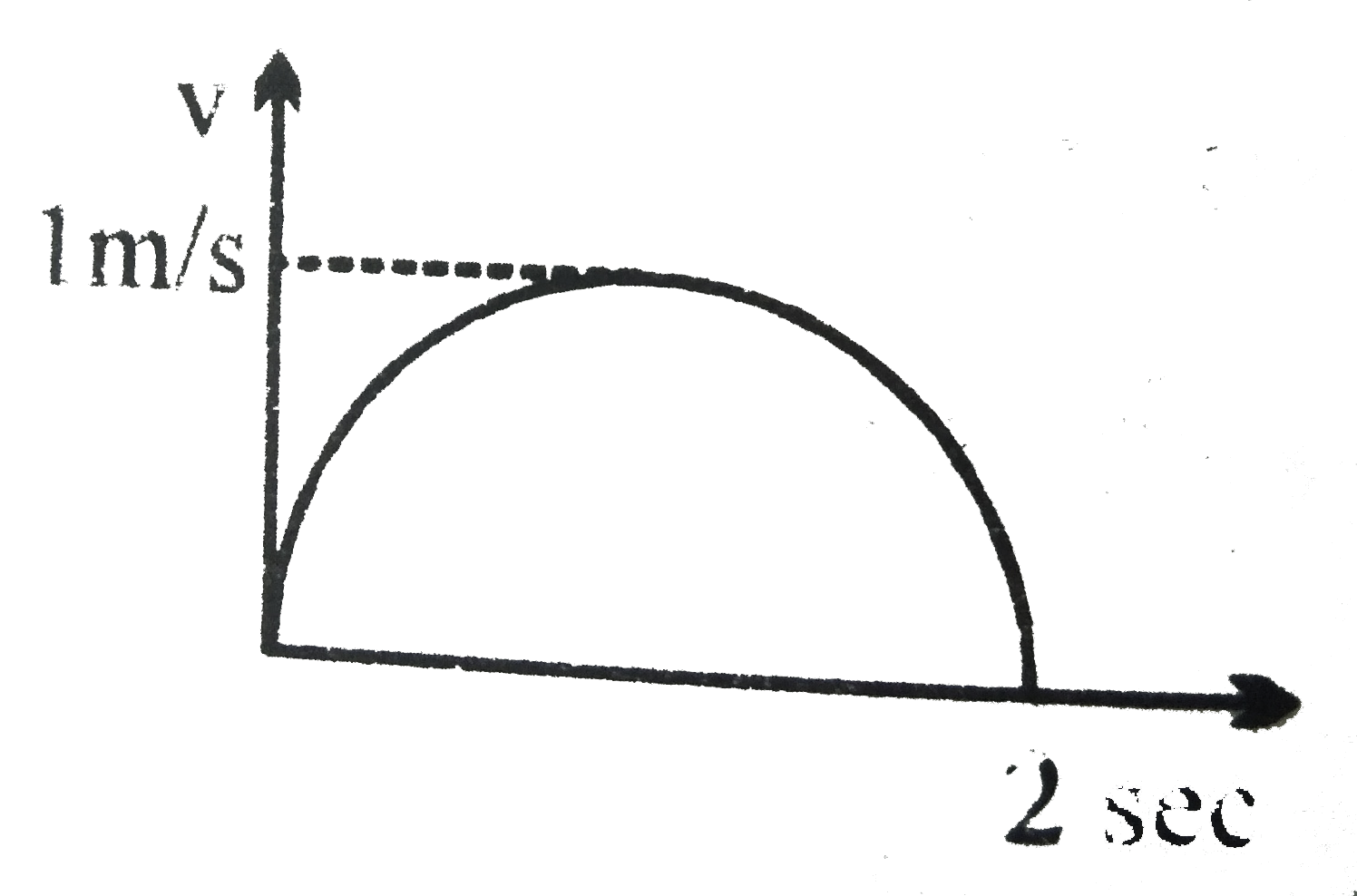 ACar must move in circular path.BAcceleration of car is never zero.CMean spped of the aprticel is π/4m/s.DThe car makes a turn once during its motion.
ACar must move in circular path.BAcceleration of car is never zero.CMean spped of the aprticel is π/4m/s.DThe car makes a turn once during its motion. - Question 3 - Select One
The velocity-time graph of a car moving along a straight road is shown in figure. The average velocity of the car in first 25 seconds is
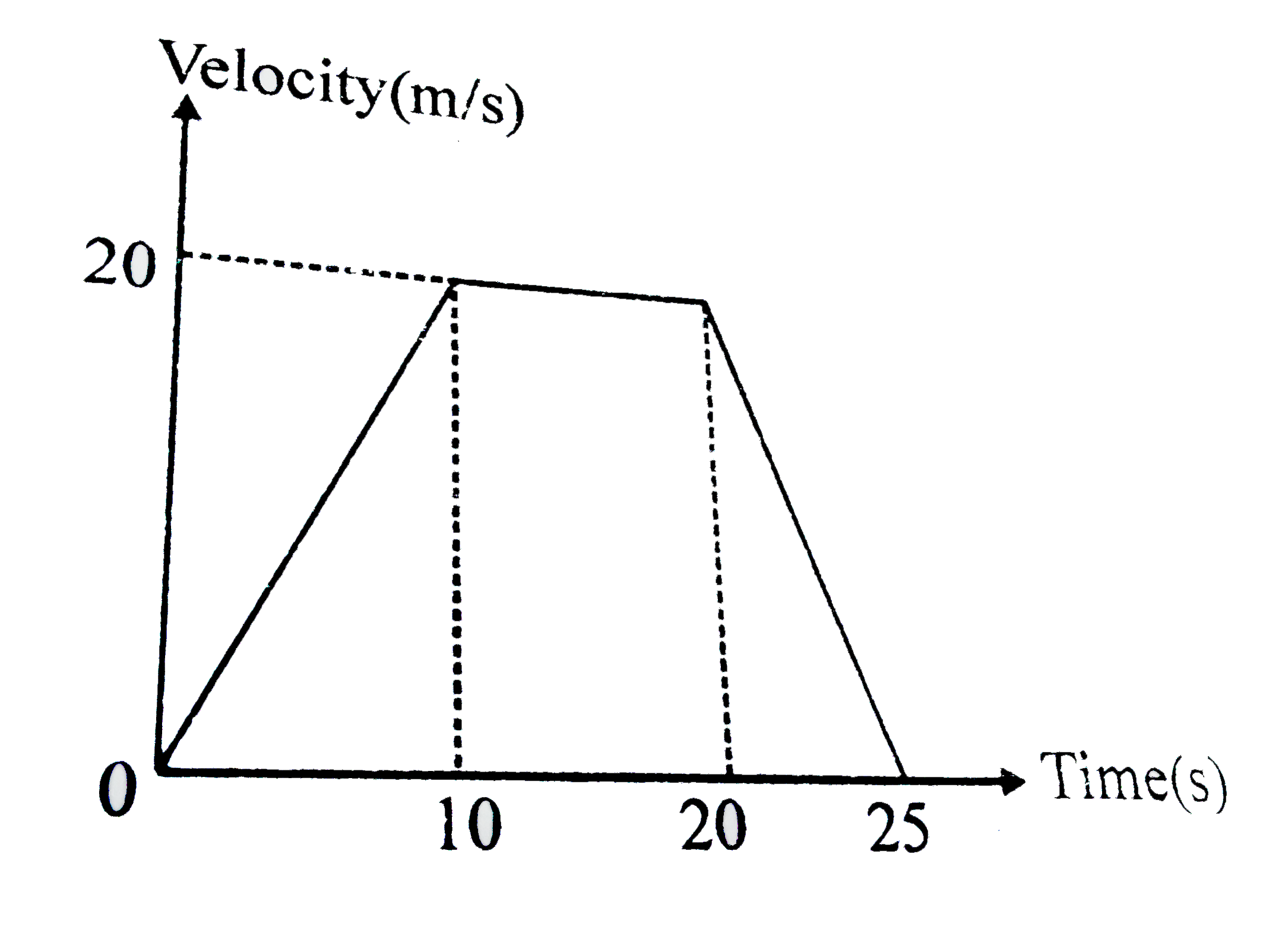 A20m/sB14m/sC10m/sD17.5m/s
A20m/sB14m/sC10m/sD17.5m/s
Shows the position-time graphs of three cars A,B and C On the basis of the graphs answer the follwing questions:
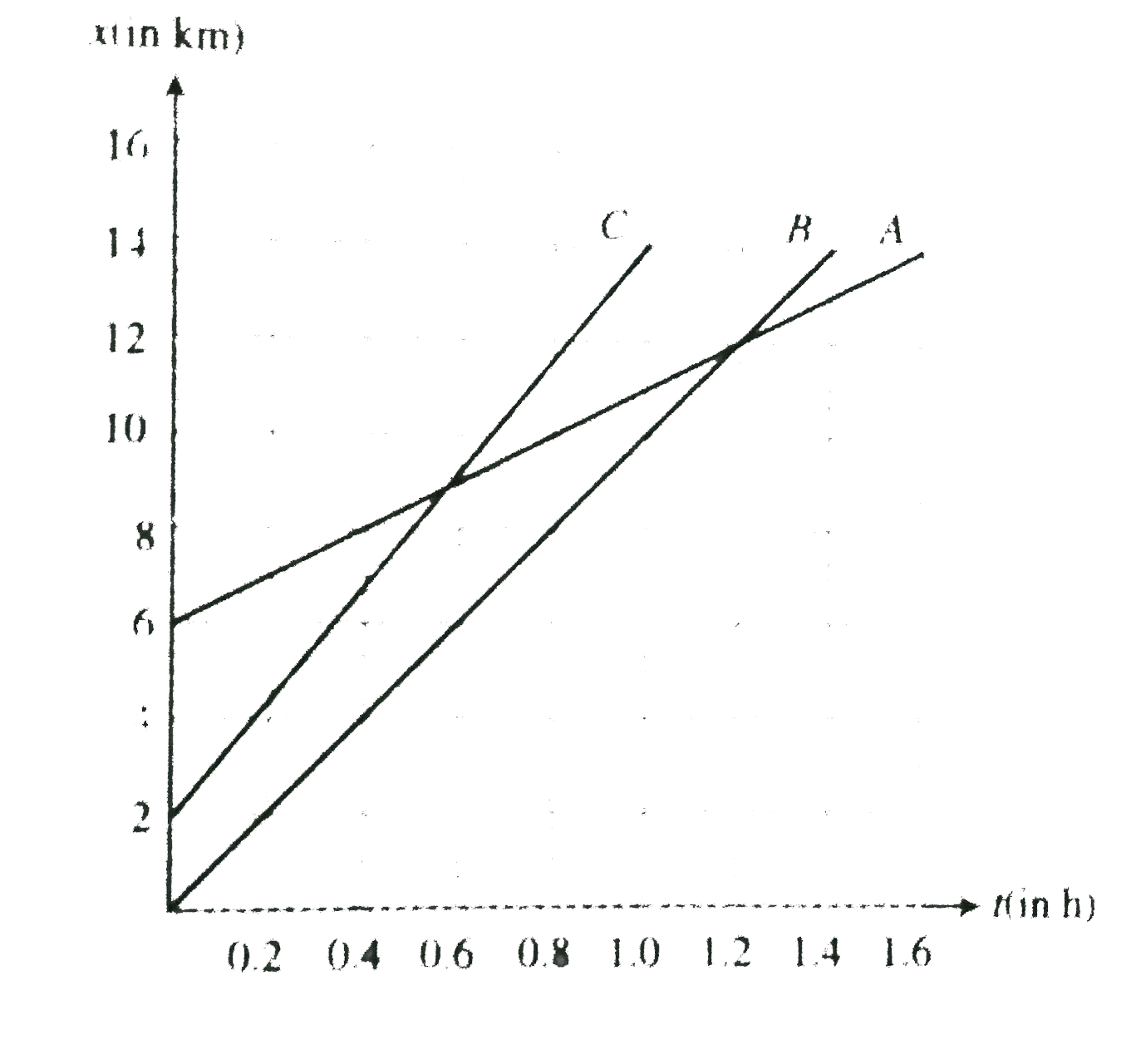 .
.
a. Which car has the highest speed and which the lowest?
b. Are the three cars evrs at the same point on the road?
c. When C passes A, wher is B?
d. What is the time interval during car A travel between the time it passed cars B and C ?.
e. What is the relative velocty of car B with respect to car C?View SolutionFigure shows the position-time graphs of three car A, B and C. On the basis of the graphs, answer the following questions : What is the relative velocity of car B with respect to car C ?
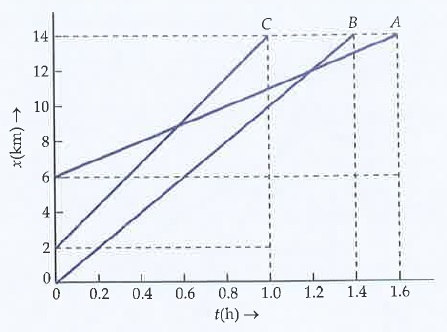 View Solution
View SolutionFigure shows the position-time graphs of three car A, B and C. On the basis of the graphs, answer the following questions : What is the relative velocity of car C with respect to car A ?
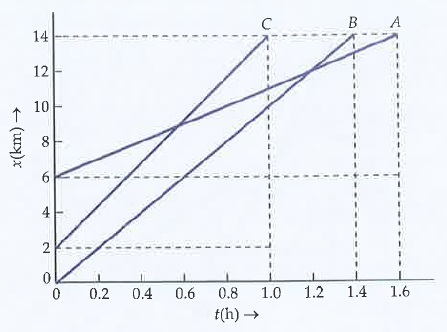 View Solution
View SolutionThe velocity-time graph of a car moving along a straight road is shown in figure. The average velocity of the car is first 25 seconds is
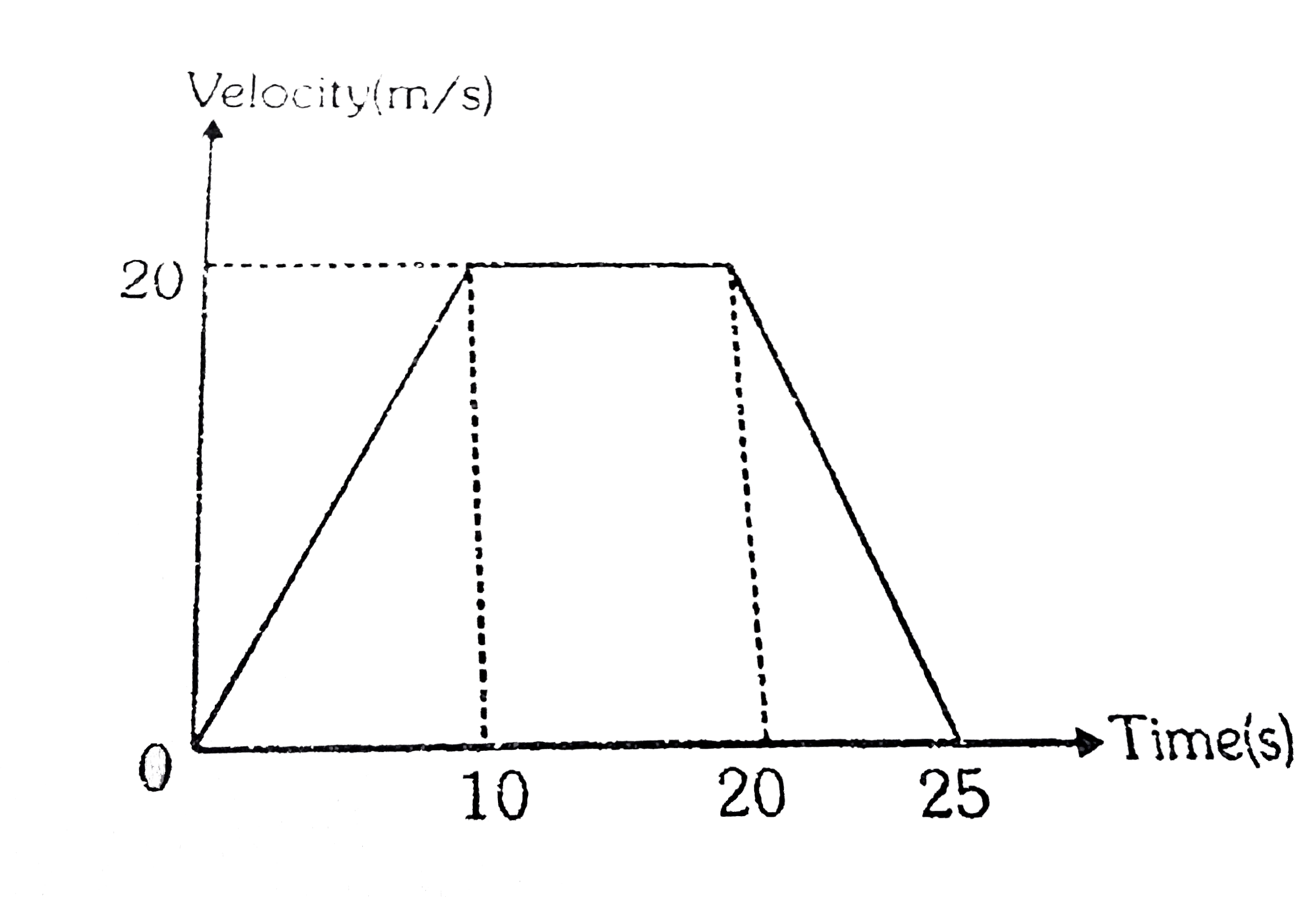 View Solution
View SolutionA car of mass 1000 kg is moving with a velocity of 10 m s−1. If the velocity-time graph for this car is a horizontal line parallel to the time axis, then the velocity of car at the end of 25 s will be :
View Solution

